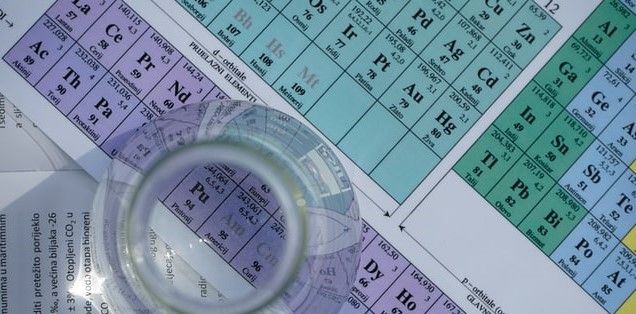Polymer scientists have made a significant breakthrough by producing the world’s first self-assembling polymer sheet. The discovery was made despite decades of unsuccessful research which concluded that polymers could only be induced into one-dimensional chains and not 2D layers.
The new material also has numerous practical applications for manufacturing as it is many times stronger than steel and yet lighter than plastic. The polymer is also impermeable to gases and made from a novel process which can easily be scaled up for industrial production.
With demand for lighter, more protective body armour growing in both military and civilian markets, the new polymer – called 2DPA-1 – may well provide the basis for innovative designs in bulletproof protection.

According to the new study’s senior author Prof. Michael Strano of MIT, the new polymer “… has very unusual properties.”
It has long been hypothesized that if polymers could be made much stronger and lighter if formed in two-dimensional sheets, but years of research led material scientists to believe that it wasn’t possible to form plastics in this way.
Instead, it was thought that polymers could only be made in building block chains called monomers. These chains are synthesized by adding new molecules onto their ends. When they are long enough and have a stable length they are formed into three-dimensional materials which can be shaped into everyday objects (kids’ toys, water bottles, etc.) by processes such as injection moulding.
The key part to creating this new material was rethinking how polymers are manufactured. As an MIT report explains, “Strano and his colleagues came up with a new polymerization process that allows them to generate a two-dimensional sheet called a polyaramide. For the monomer building blocks, they use a compound called melamine, which contains a ring of carbon and nitrogen atoms. Under the right conditions, these monomers can grow in two dimensions, forming disks. These disks stack on top of each other, held together by hydrogen bonds between the layers, which make the structure very stable and strong.”

“Can you polymerize in a sheet?” asks Strano. “It turns out that under most circumstances, until our work, you could not. So, we found a new mechanism.”
The new polymer is in the same class of materials as the fire-resistant fabric Nomex, as well as Kevlar – the ‘go to’ raw material for use in body armour. It is made up of a network of amide molecular units (amides are chemical groups of nitrogen attached to an oxygen-bound carbon atom) to form a polyaramide.
Like Kevlar, the polyamide molecules connect to each other via hydrogen bonding all along the length of their chains, providing the material’s superb strength.
“They stick like Velcro to each other,” says Strano.
In tests at the MIT lab, the new polymer’s elastic modulus — a measure of how much force it can take before it deforms — is between four and six times greater than bulletproof glass. While its yield strength – the force needed to break it – was double that of steel, but with more than 80% less density.
“An important aspect of these new polymers is that they are readily processable in solution,” notes Prof. Matthew Tirrell of the University of Chicago. According to him, “… [this] will facilitate numerous new applications where high strength to weight ratio is important, such as new composite or diffusion barrier materials.”

Besides body armour and the strengthening of vehicles, bridges, and other metallic structures, the polymer is also drawing attention the attention of manufacturers as it is impermeable to gases.
The material has this property because unlike other polymers which have gaps between their coiled chains, the new material is made from monomers which lock together so tightly that molecules cannot pass through.
“This could allow us to create ultrathin coatings that can completely prevent water or gases from getting through,” Strano says.
Despite possessing so many highly sought-after properties, thanks to its self-assembling nature, 2DPA-1 is also suitable for industrial production.
“Instead of making a spaghetti-like molecule, we can make a sheet-like molecular plane, where we get molecules to hook themselves together in two dimensions,” explains Strano. “This mechanism happens spontaneously in solution, and after we synthesize the material, we can easily spin-coat thin films that are extraordinarily strong.”

With mass shootings, terrorist attacks, and European wars making us all feel less safe, the need to develop low weight, yet super strong body armour is needed more than ever. And while this work to develop the world’s first 2D polymer may only have opened the door on how to make better materials, bulletproof vest design may be about to enter a ‘polymer-revolution’
As Strano succinctly notes, “Polymers are all around us. They do everything.”
Photo credit: Norbu Gyachung on Unsplash, Intenza fitness, Erik Mclean on pexels, Karolina Grabowski, & Vedrana Filipovic & Demidov Armor
